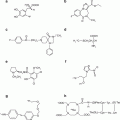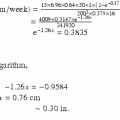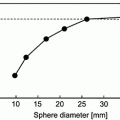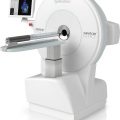(1)
Cleveland Clinic, Emeritus Staff, Cleveland, OH, USA
Keywords
ReimbursementCPTHCPCSICD-10CMSBackground
Healthcare providers (physicians, hospitals, clinics, etc.) operate and are sustained by the reimbursement or payment for care they provide to patients. In the USA, revenue for healthcare services comes from a variety of sources including the patient, insurance companies (i.e., Blue Cross and Blue Shield, Cigna, Aetna), and the Centers for Medicare and Medicaid Services (CMS). The CMS provides healthcare insurance for Medicare and Medicaid beneficiaries, which most insurance companies follow. When interfacing with an insurance company or the CMS, there are three fundamental reimbursement concepts that must be considered to assure appropriate revenue for services provided. These include the concepts of coverage, coding, and payment.
Coverage
Coverage can be defined as the range or extent of healthcare that an insurer will pay for based on the terms of the insurance plan. The CMS under Medicare Act has developed two pathways to secure coverage policies or guidelines for reimbursement for clinical procedures or drugs: national coverage determination (NCD) and local coverage determination (LCD). An NCD is a determination by the CMS if a procedure or service is reasonable and necessary for reimbursement and is initiated either by the request of an outside party or by the CMS. Several factors are considered when developing an NCD for reimbursement for a service: (1) it meets a defined benefit category; (2) it is reasonable and necessary for the care of a patient; and (3) the radiopharmaceutical is approved by the FDA for safety and effectiveness. (Some exceptions are made for products that are in clinical trials.) In addition, the CMS may request an evaluation of the health outcome of a particular procedure prior to making a national coverage decision. The CMS employs contractors, the Office of Health Technology Assessment (OHTA) in the Department of Human and Health Services, or literature reviews for the assessment of health outcome of different procedures. It is important to note that an NCD does not specify the code nor the amount of payment. The LCDs are similar to NCDs but are established by the Medicare Administrative Contractors at local levels and applies to reasonable and necessary procedures or services and must specify diagnosis code (see later) for reimbursement. They can be superseded by NCDs. In the past the majority of LCDs were made by two categories of CMS contractors: for Medicare Part A, “fiscal intermediaries” processed claims from facilities/hospitals, and for Medicare Part B, the “carriers” processed claims from physicians or freestanding imaging facilities. Beginning in 2003, for the purpose of improved services to beneficiaries and healthcare providers, Medicare started replacing the fiscal intermediates and carriers with Medicare Administrative Contractors who now provide services for both Part A and Part B.
NCDs have been developed and are currently in place for most clinical PET procedures. Private payers generally follow similar policies and procedures when establishing their coverage guidelines.
Coding
CPT, HCPCS, and APC Codes
Simply defined, coding systems are used by providers and health plans to document the delivery of healthcare services for reimbursement purposes as well as to track services provided. Two major types of codes are important to consider for all clinical procedures: Current Procedural Terminology (CPT) codes introduced by the American Medical Association (AMA) and Healthcare Common Procedure Coding System (HCPCS) codes developed by a committee composed of private insurers and CMS representatives. The CMS requires the use of CPT codes for reimbursement for a clinical condition except in a few cases where HCPCS codes are required. The HCPCS codes are divided into two categories: Level I and Level II. Level I of HCPCS consists of AMA CPT-4 and is a uniform coding system to identify medical services and procedures furnished by physicians and other healthcare professionals. Level II of HCPCS is a standardized coding system that is used primarily to identify products, supplies, and services not included in the CPT-4 codes, such as ambulance services, durable medical equipment, prosthetics, orthotics, and supplies when used outside a physician’s office. Codes are updated at least annually to adjust to the change in conditions and cost over time.
It is important to note that the applicable code for a service or a drug may vary based on the site of service (hospital inpatient, hospital outpatient, freestanding imaging facility) and payer type (Medicare versus non-Medicare). CPT codes primarily describe the procedures for different clinical indications and can be used for indications that are not covered by Medicare. Ambulatory Payment Classifications or APCs are the CMS method of paying for outpatient services in the Medicare B program, which is discussed later in this section.
The current CPT codes (2015 CPT codes, AMA) used for all approved PET studies of different clinical indications are summarized in Table 11.1. Initially, reimbursement by the CMS for these indications was limited to their diagnosis, staging, restaging, recurrence, and monitoring of therapy. Currently, this grouping of assessment has been replaced by two categories of assessment—initial treatment strategy (replacing former diagnosis and initial staging) and subsequent treatment strategy (replacing former treatment monitoring, restaging, and detection of suspected recurrence). All cancer PET studies listed in Table 11.1 are reimbursed for both initial and subsequent treatment strategies. Some examples of this group of cancer indications are the stomach, small intestine, pancreas, kidney, bladder, primary brain, and so on.
Table 11.1
CPT and HCPCS codes related to PET and PET/CT procedures
CPTa/HCPCS codesb | Description |
|---|---|
CPT 78811 | Tumor imaging, positron emission tomography (PET); limited area (e.g., chest, head/neck) |
CPT 78812 | Tumor imaging, positron emission tomography (PET); skull base to mid thigh |
CPT 78813 | Tumor imaging, positron emission tomography (PET); whole body |
CPT 78814 | Tumor imaging, positron emission tomography (PET) with concurrently acquired computed tomography (CT)c for attenuation correction and anatomical localization; limited area (e.g., chest, head/neck) |
CPT 78815 | Tumor imaging, positron emission tomography (PET) with concurrently acquired computed tomography (CT) for attenuation correction and anatomical localization; skull base to mid thigh |
CPT 78816 | Tumor imaging, positron emission tomography (PET) with concurrently acquired computed tomography (CT) for attenuation correction and anatomical localization; whole body |
CPT 78459 | Myocardial imaging, positron emission tomography (PET); metabolic evaluation |
CPT 78491 | Myocardial imaging, positron emission tomography (PET), perfusion; single study at rest or stress |
CPT 78492 | Myocardial imaging, positron emission tomography (PET), perfusion; multiple studies at rest and/or stress |
CPT 78608 | Brain imaging, positron emission tomography (PET); metabolic evaluation |
CPT 78609 | Brain imaging, positron emission tomography (PET); perfusion evaluation |
HCPCS G0219 | PET imaging whole body; melanoma for noncovered indications |
HCPCS G0235 | PET imaging, any site not otherwise specified (not covered by Medicare) |
HCPCS A9526 | Nitrogen N-13 ammonia, diagnostic, per study dose, up to 40 mCi (1.48 GBq) |
HCPCS A9580 | Sodium fluoride F-18, diagnostic, per study dose, up to 30 mCi (1.1 GBq) |
HCPCS A9552 | Fluorodeoxyglucose F-18 FDG, diagnostic, per study dose, up to 45 mCi (1.67 GBq) |
HCPCS A9555 | Rubidium Rb-82, diagnostic, per study dose, up to 60 mCi (2.22 GBq) |
HCPCS A9586 | Florbetapir F-18, diagnostic, per study dose, up to 10 mCi (370 MBq) |
HCPCS A9559 | Radiopharmaceutical, diagnostic, for beta-amyloid positron emission tomography |
Diagnosis Codes
In addition to CPT or HCPCS codes, the CMS also requires specific codes for diagnosis of diseases for inpatient, outpatient, and physician office utilization for efficient claims processing and appropriate reimbursement. These codes, called the diagnosis (Dx) codes, are listed in the International Classification of Diseases, Tenth Revision, Clinical Modification (ICD-10-CM) for diagnosis for inpatient hospital procedure coding. ICDs have been developed by the World Health Organization (WHO) to promote international comparability in the collection, processing, classification, and presentation of mortality statistics. However, WHO has authorized the development of an adaptation of ICD-10 for use in the USA for government purposes. So the CMS uses these adapted codes for classification of diseases for reimbursement purposes. Along with CPT/HCPCS codes, Dx (ICD-10-CM) codes must be provided on the claim form for appropriate reimbursement. These codes are annually reviewed and updated. A few current examples of Dx (ICD-10-CM) codes for the diagnosis of diseases by PET studies are given in Table 11.2.
Table 11.2




Examples of current diagnosis codes (ICD-10-CM) for PET studies
Stay updated, free articles. Join our Telegram channel

Full access? Get Clinical Tree







